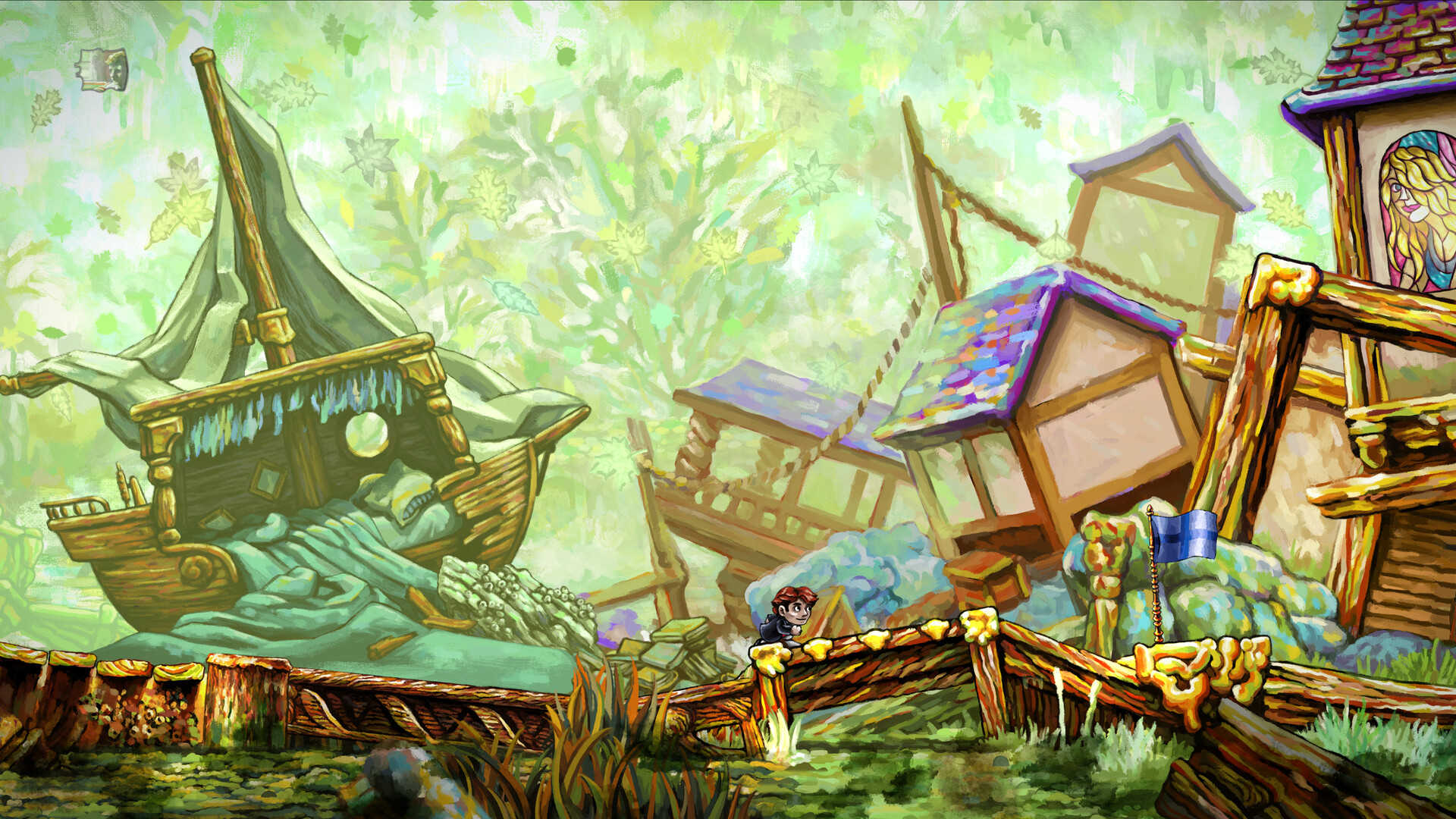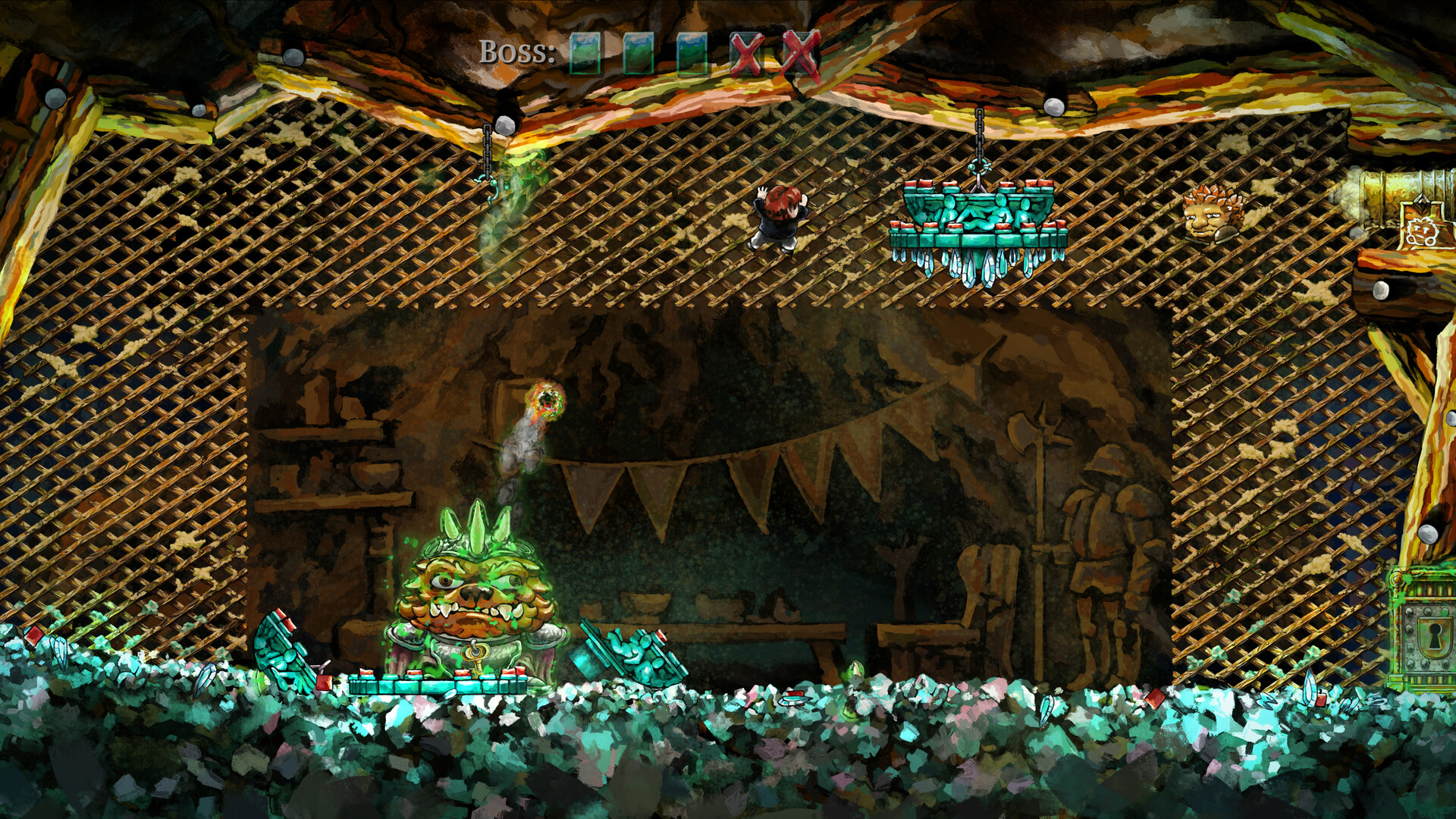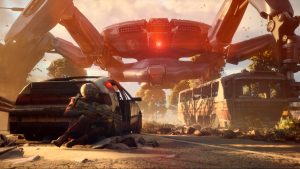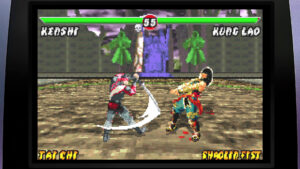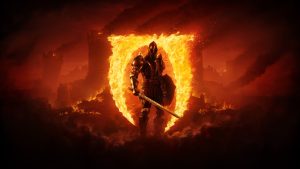
As Vin Diesel once said before The Fast and the Furious life really took hold of him, “Time is fleeting.” It can mean multiple things – life is short, you have limited time, and the seconds, minutes and hours of your life fly by. However, Jonathan Blow’s Braid proves another addendum of time after almost 16 years since its launch on the Xbox 360 – that it’s relative. What was a Game of the Year candidate, an instant classic, a signal flare attracting more attention for indie games (alongside Super Meat Boy and Fez), an example of video games as art, remains so all these things and more.
It’s still a poignant, haunting experience that challenges the traditional notions of gaming while presenting its own compelling gameplay. Braid also all the more relevant in today’s gaming world – one where video game budgets continue to balloon to absurd heights. Where some of the most relevant platformers are the dynasties and franchises – the Marios and Sonics of the world (no disrespect, of course). An industry where small and/or relatively unknown teams can still find absurd measures of breakout success.
"Braid is the story of Tim, an unassuming man who wants to find the Princess, ideally, save her from a monster and make up for a mistake he made."
Developed and published by Thekla Inc, Braid Anniversary Edition isn’t just a re-release – it offers gorgeous new visuals and backgrounds with higher-resolution art, updated sound effects and a more extensive soundtrack. There’s the option to switch between the original and updated visuals, and it really can’t be overstated how gorgeous the latter appears. Whether it’s the new foliage in environments, painted lights and shadows, improved effects for actions, improved animations or the extensive attention to detail, the graphical update is impressive all on its own. Suffice it to say that it runs incredibly well with no hiccups.
That’s not all, as new options like Speedruns (either for individual worlds or the whole game) and heaps of developer commentary are also included. It’s a lot to unpack, yet it would all be for nought if the core experience didn’t hold up.
Braid is the story of Tim, an unassuming man who wants to find the Princess, ideally, save her from a monster and make up for a mistake he made. By peering into short journal entries in each world’s “hub,” other aspects of Tim’s life are known, from his relationship with his parents to what seems like an experiment. The fact that the Princess is always noted as “being in another castle” by a cute stuffed dinosaur – who also questions whether she’s real – only adds to the mystery and intrigue.
There are initially five worlds to explore, each consisting of multiple levels where you collect puzzle pieces to form different frames. While the first level feels like a Mario clone, complete with goomba-like foes to stomp, things pick up immediately in the second as the player quickly learns of Tim’s ability to rewind time. It allows for negating deaths and redoing sections if you make mistakes, but that’s only the first world.
"Of course, if you want to see what every stage has to offer without bothering to collect the pieces of each frame, go ahead, but you won’t unlock the first and final world or the proper ending."
Subsequent worlds play around with different concepts of time, from everything – enemies, projectiles and even keys moving forwards or backwards in time and space as you do to some objects being unaffected by its flow.
So while you flip switches, jump off enemy’s heads and collect keys to unlock doors, it’s all wrapped up in clever puzzles that require ingenuity, timing and a fair number of retries. What happens when you start to think in terms of recording and rewinding your actions, especially when you create a temporary clone of yourself in the process or manipulate keys to open multiple doors? It’s a fascinating exercise that remains as clever now as it did all those years ago.
Of course, if you want to see what every stage has to offer without bothering to collect the pieces of each frame, go ahead, but you won’t unlock the first and final world or the proper ending. The responsiveness and physics of the platforming really are something to behold, especially when manipulating time.
Tim may be immune to fall damage, but can still bounce off the environment depending on the velocity, messing up some landings. He can drop down from ladders and fences but can’t leap up from them to attain greater heights. Minute as all this may seem, they’re critical to solving some trickier puzzles since you need to work around these limitations.
"You might think the developer commentary would shine more light on this, and, to be fair, it doesn’t shy away from acknowledging the more popular theories."
Otherwise, Braid lacks many of the so-called “traditional” platforming elements. There is only one boss to fight, who appears twice, though the method for taking them out differs significantly on the next go-around. Outside the frame pieces and mysterious stars, there aren’t any collectibles or extraneous dialogue during stages, making for a tighter, well-paced experience.
A good chunk of the game’s legacy also centers on the interpretation of its plot points, as it culminates in one of the best ending levels and reveals in a video game to date. The true identity of the Princess, Tim’s real life and how he views the world around him vs. its actual state, the misconception of heroism – there’s a lot to glean from it all, but Blow and his team aren’t forthcoming with the answers, even if some meanings are more blatant than others.
You might think the developer commentary would shine more light on this, and, to be fair, it doesn’t shy away from acknowledging the more popular theories. However, it’s a deep dive into the game’s development – its design, the art (both original and updated), music, programming and much more. There are options to delve into separate aspects of the entire experience – represented as separate interactive levels – or play through the whole game while the commentary outlines everything.
What motivated changing a certain level’s architecture? How did the idea for the game come about? Is the opening section meant to depict a city on fire (spoilers: it’s actually just a city during sunset)? All these questions and many more are answered throughout, while plenty remains up in the air.
"To say that Braid is an essential part of gaming history would be a given – it’s a title that should be experienced, even if some sections can be a little more frustrating than others, even when everything clicks."
If you thought there was some deeper significance to the boss and one other important character wearing armor…well, the answer may not be what you want to hear. It doesn’t change the fact that the sheer breadth of commentary, from early sketches and documents to interviews, is worth the price of admission for hardcore fans alone.
To say that Braid is an essential part of gaming history would be a given – it’s a title that should be experienced, even if some sections can be a little more frustrating than others, even when everything clicks. Even without one of the best platformers of all time and the various improvements made to its presentation, the Anniversary Edition stands out for its sheer range of extra content. It’s intriguing to hear about the process behind everything and how things came to be, not to mention Blow reflecting on the project after all these years.
In closing, Braid could be analogous to the industry itself, coming full circle and seeing the prologue seamlessly shift into an epilogue. Where the end becomes the beginning, and amid the doom and gloom, there’s some hope – or at least the potential for the same – even amid all the messy dealings. Maybe it’s unintentional, maybe not – the fact that it can still inspire such thinking to this day is undeniably impressive.
This game was reviewed on PS5.
Time-based gameplay remains as engrossing as ever. Responsive controls and platforming. Impeccably designed levels and sequences, especially the climax. New hand-painted visuals look absolutely stunning. Developer commentary is absolutely worth the price of admission alone.
Some sections can get a frustrating especially if your timing is off.










